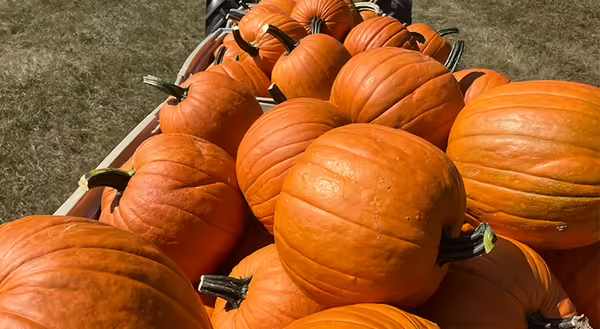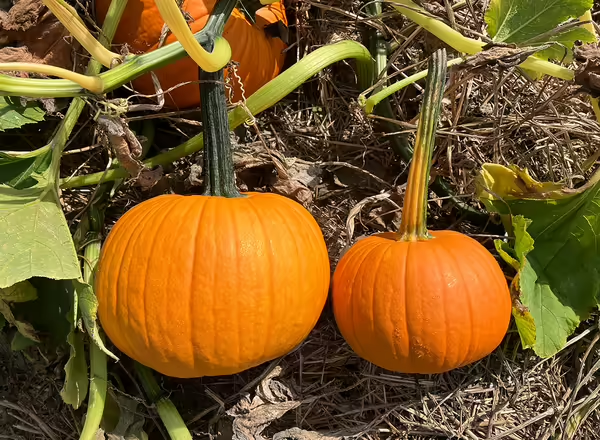
Whether it feels like fall or not, fall is here, and pumpkin season has started. We have been very dry and other than a few breaks have had temperatures early in September in the 90s and now have dropped back to the mid to upper 80s for highs. Rainfall down here has been minimal. We did have, near Waterloo, almost 1 inch of rain across 5 days from 9/20 to 9/25 but areas to the south barely got 0.5” total. This did bring some minor relief but as soon as the sun and mid 80s high temperatures came back for a day or two, any relief was gone.
Pumpkins have handled the weather fairly well, but the stress of the heat and dry of August and September has shown on some varieties in terms of yield and quality. Jack-O-Lanterns (C. Pepo) have shown the stress the most, mainly just in fruit size. From pie-sized to carving pumpkins varieties, the early fruit set on most varieties is 10-40% less than typical. The later fruit set, happening once we had some relief from the temperatures, are sizing more normally. Pie-sized like ‘Touch of Autumn’ and ‘Field Trip’ and carving sized varieties including ‘Bayhorse Gold,’ ‘Magic Lantern,’ and ‘Early Giant’ among others showed this reduced size and stress the most. Now many of the specialty pumpkins which are mainly in the winter squash family (C. maxima) seemed to be affected much less and size is fairly normal or only minorly influenced. This could be due to the difference in species tolerance of heat/dry and/or possibly a difference in timing of bloom relating to the weather. While the drought is a major factor, I feel the heat may have been even more important. Through most of Late July and August the plants did not get any break, with nighttime temperatures staying near 80 degrees and this stress really shows.

The weather has caused a lot of yellowing of older leaves. Most of this is unavoidable and simply a sign of the plants responding to the stress. Leaf symptoms also resemble potassium deficiency, yellowing of older leaves starting at the leaf margin and moving inward on the leaf. This may occur even with well fertilized fields simply because water is needed to take up potassium and under drought conditions the plant just cannot access it.
Powdery mildew pressure has been manageable. I made my last fungicide spray on August 31. I debated continuing one more spray just for powdery mildew but at that time I saw no signs of the disease. 7-10 days later I did notice early signs of some powdery mildew on some old leaves that had yellowed due to the drought, but by that point harvest had started and I decided I would ride out the rest of the season. My main concern at this point is keeping it off of the pumpkin stems, and I think we can manage to accomplish that. Would that extra spray the first week of September been worth it? I guess we will never know and I am ok with that!
Pumpkin harvest is going well and at this point it may as well be dry as harvesting in the mud and wet is not much fun. I will say that I appreciate harvest more with a flannel shirt on than sweating but in the grand scheme of things that isn’t too bad. I do feel that the heat has not really put some people in the “fall mood” to buy pumpkins, but each week more and more give in as the calendar creeps closer to October.
Aside from pumpkins, fall crops have appreciated the sun and warm only if they have water. My fall broccoli and cauliflower has been watered more than I wanted to but is doing well. Broccoli has small heads maybe the size of a golf ball. Cauliflower is still holding out for some cooler weather for head formation. So long as it has the water it has been fairly happy. I also have some fall snap beans (also irrigated); they are in full bloom now and hopefully will yield some nice beans before any danger of frost.